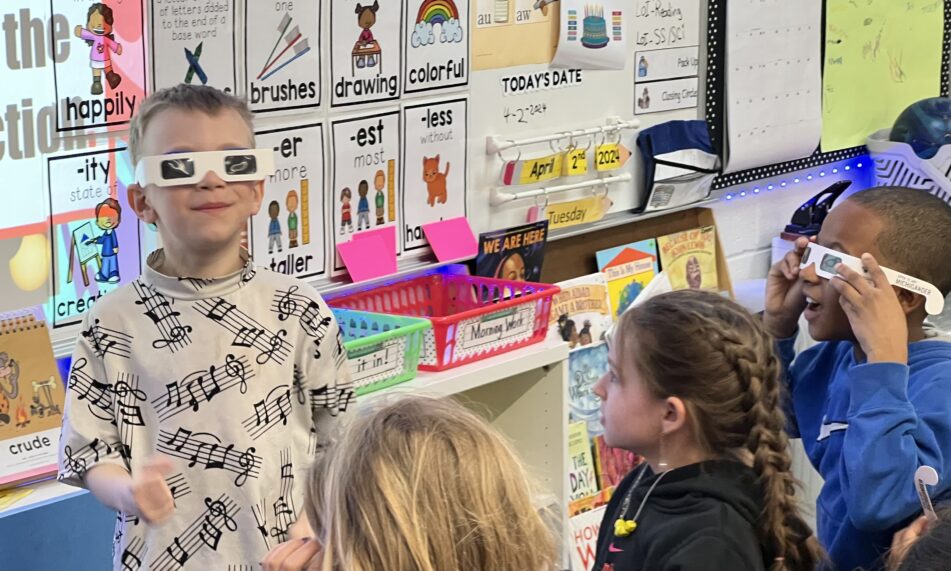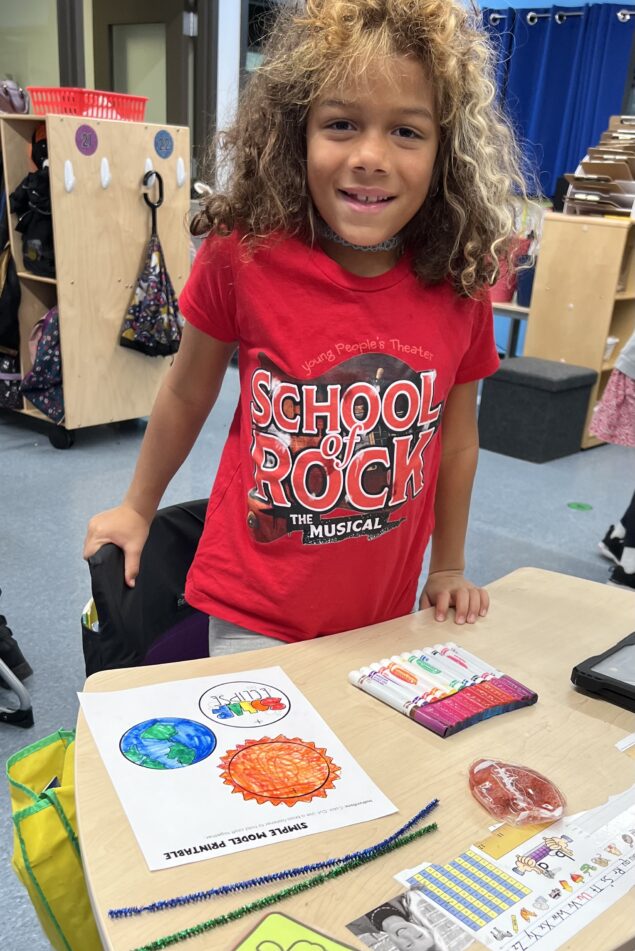
Classrooms across the Ann Arbor Public Schools have been getting lessons about next week’s solar eclipse. If the weather works out, students and staff will even be able to safely view the solar eclipse on April 8, thanks to a donation of glasses from the Michigan Schools & Government Credit Union (MSGCU).
Thanks to the MSGCU donation of 20,000 eclipse glasses, students and staff will get the opportunity to look directly at the eclipse, which would not be possible without risking eye damage without the glasses. The district has created lesson plans for elementary school teachers, including special materials for those in grades that don’t typically include units on space. All middle and high schools will provide safety information and grade-level appropriate, brief information about eclipses during advisory or another designated class period.
The MSGCU recently opened a branch office in Ann Arbor on Stadium Boulevard, south of Liberty, and is excited to help the AAPS community participate in this historic event. “As an organization founded by educators 70 years ago, MSGCU is proud to provide Ann Arbor Public Schools with eclipse glasses to bring a unique and engaging learning experience to students,” said Steve Brewer, MSGCU President/CEO. “MSGCU is excited to help students and teachers safely observe the solar eclipse through our donation.”
Ann Arbor narrowly misses the total solar eclipse that is taking place on Monday, April 8th, but will experience a 98.4 percent complete eclipse, with the maximum magnitude at 3:13 PM. Locally the eclipse begins at 1:57 PM and ends at 4:26 PM.
AAPS will be hoping for clear skies next Monday because, as elementary math and science curriculum coordinator Tony Stamm shared, it’s going to be a while before Ann Arbor has another solar eclipse of this magnitude. “We won’t see this event again here until 2099,” Stamm said. “To actually be able to step outside and witness something like this during the day together, that’s really rare. I don’t think there’s anything comparable that really accounts for the magnitude of the event, as well as the accessibility.”

District Science Department Chair for Grades 6-12 Amy Deller-Antieau said 8th-grade science classes have studied stories about how several cultures over long periods of time have observed, understood and shared stories about the stars and sky, including events like eclipses. “They explored how these cultures have contributed valuable information to our study of the skies in terms of understanding the patterns of our Earth, Moon, Sun and other stars over very long periods of time,” Deller-Antieu said. “These observations help astronomers and other scientists to understand the ways in which these patterns have been stable or changing over time, even before we had advanced technology to sense and track these patterns. They also come to understand that early civilizations’ observations of the moon and sun tie directly to the fundamental aspects of our life today, including agricultural practices, our monthly calendar system and more.”
At Bryant Elementary, second grade teacher Julianne Cooper taught her students about eclipses by sharing a time lapse video of a recent eclipse and having them hold their thumb up to serve as a model of the Moon blocking out a ball she held up as the Sun. Cooper’s class then got to make their own models, using paper versions of the Sun, Earth, and Moon with pipe cleaners and brads.


Be the first to comment